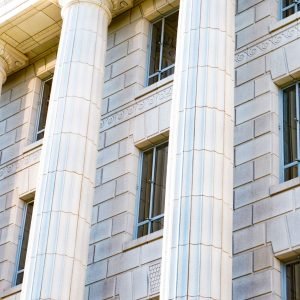Patent Prosecution
Patent prosecution is the back-and-forth process between an applicant and the patent office in an effort to get a patent application granted. A patent office will issue responses to patent applications, either granting the patent or rejecting the application. Applicants respond to office actions and rejections by raising arguments or amending the application.
Provisional patents do not get prosecuted. However, utility patents, design patents, and international patents do get prosecuted.

Most Patents Will Receive At Least 1 Rejection
There are two reasons why almost all patent applications face a rejection: (1) patent claims are drafted intentionally broad so that the subsequent issued patent is as broad as possible, and (2) patent examiners are trained to issue rejections even if the rejection can be overcome.
A strategic approach to claim drafting is to draft your first independent claim extremely broad, and add dependent claims that include 1 additional limitation. If you draft 10 claims, an examiner may reject claims 1-8 but note that claims 9 and 10 would be patentable. This would tell you how many limitations you need to include in your initial claim to receive the broadest patent possible.
Regarding patent examiners, if you read through the Manual of Patent Examination Procedure (MPEP) you will find notes for examiners along with suggested statements to include in their office actions. Some of the notes state that an examiner “should” issue a rejection in certain situations, such as finding combinations of prior art. This rejection that “should” be issued does not take into account any counter arguments that would overcome the rejection. Therefore, some rejections are made as a matter of procedure instead of as a matter of substance.
Prosecute Your Patent More Efficiently With Experienced Counsel
Patent prosecution can theoretically last forever. Patent applications prosecuted without experienced counsel typically incur multiple additional office actions, resulting in months of extra time and thousands of extra dollars expended.
Work with our experienced patent attorneys instead. We will help you obtain a patent in less time while paying for fewer office action responses.
What Sets Us Apart
Awards
Recognized in Best Lawyers: Ones to Watch in America for Patent Litigation.
Reviews
5.0★ Google Rating Across All Locations
Clients consistently rate us 5 stars for responsiveness, clarity, and strategic insight.
Testimonials
“Joe was phenomenal to work with. As a first-time inventor navigating the patent process, I couldn’t have asked for better support. He was fast, efficient, and took the time to ensure my filing not only met requirements, but maximized the value of my invention. He answered every question, offered thoughtful guidance, and delivered a polished, professional specification right on schedule. If you’re looking for someone who knows their stuff and actually gives a damn, Joe’s your guy.”
Learn More About Patents
Biotechnology Intellectual Property: Strategies for Innovators
Biotechnology Intellectual Property: Strategies for Innovators Navigation Understanding Biotechnology Intellectual...
Understanding Markush Structure in Patents
Understanding Markush Structure in Patents Navigation Introduction What is a...
Guide to Medical Patents
Guide to Medical Patents Navigation Types of Medical Patents Application...
USPTO Patent and Trademark Fee Changes in 2025
USPTO Patent and Trademark Fee Changes in 2025 Navigation Trademark...




